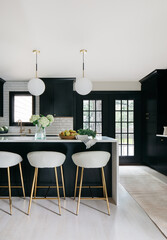A kitchen renovation is one of the most rewarding home improvement projects, both in terms of functionality and return on investment. The kitchen serves as the heart of the home, so updating its layout, features, and design can significantly improve your daily life while boosting property value. However, to make the most of your renovation, careful planning and smart choices are essential. Here are expert tips to help you get the best results from your kitchen remodel.

1. Start with a Solid Plan
Before tearing down walls or purchasing appliances, take time to plan every detail. Define your goals—are you aiming for more storage, better workflow, or a modern aesthetic? Measure your space accurately and create a layout that maximizes efficiency. The classic work triangle—connecting the sink, stove, and refrigerator—remains an effective design principle for smooth movement in the kitchen.
2. Set a Realistic Budget
Kitchen renovations can quickly become expensive if you don’t have a clear budget. Decide how much you’re willing to spend and allocate funds for cabinets, countertops, appliances, flooring, and labor. Don’t forget to include a contingency reserve of about 10–15% for unexpected expenses. Prioritize essential improvements first, and consider cost-effective alternatives for non-critical features.
3. Focus on Quality Materials
While it’s tempting to cut costs on materials, investing in durability pays off in the long run. Choose countertops, flooring, and cabinetry that can withstand daily wear and tear. Quartz and granite are excellent countertop choices, while hardwood or high-quality vinyl flooring offers both style and resilience. Quality finishes ensure that your kitchen looks great and lasts for years.
4. Maximize Storage Solutions
Ample storage is a must for an efficient kitchen. Incorporate smart solutions such as pull-out shelves, deep drawers, lazy Susans, and vertical dividers to keep everything organized. Consider adding a pantry or extending cabinets to the ceiling for additional space. Built-in storage for small appliances can help maintain clean, uncluttered countertops.
5. Upgrade Lighting for Function and Ambiance
Lighting plays a critical role in both functionality and aesthetics. Use a layered approach with three types of lighting:
- Ambient lighting for overall brightness
- Task lighting under cabinets or over countertops for meal prep
- Accent lighting for decorative touches such as pendant lights over an island
Dimmable fixtures add flexibility, allowing you to create the perfect mood for any occasion.
6. Choose Energy-Efficient Appliances
Modern appliances with high energy ratings not only save on utility bills but also reduce environmental impact. Look for features like smart controls, water-saving technology, and advanced cooking options. While energy-efficient models may cost more upfront, they deliver long-term savings and convenience.

7. Optimize Counter Space
A well-planned kitchen should provide ample countertop space for meal preparation, cooking, and storage. If your kitchen allows, consider adding an island or peninsula. These features can double as dining areas and storage solutions while providing extra work surfaces.
8. Pay Attention to Ventilation
Good ventilation is often overlooked, but it’s crucial for maintaining air quality and eliminating cooking odors. Install a quality range hood that vents to the outside rather than recirculating air. Proper ventilation also helps protect your cabinets and walls from grease buildup.
9. Add Personal Style with Finishes
The finishing touches define your kitchen’s character. Cabinet hardware, backsplash tiles, and faucet styles can all make a big impact on the overall design. Whether you prefer sleek and modern or warm and rustic, select finishes that reflect your taste and complement the rest of your home.
10. Hire Professionals for Complex Work
While some tasks like painting or installing hardware can be DIY projects, electrical, plumbing, and major structural work should always be handled by qualified professionals. Expert installation ensures safety, compliance with building codes, and a polished result that adds long-term value.